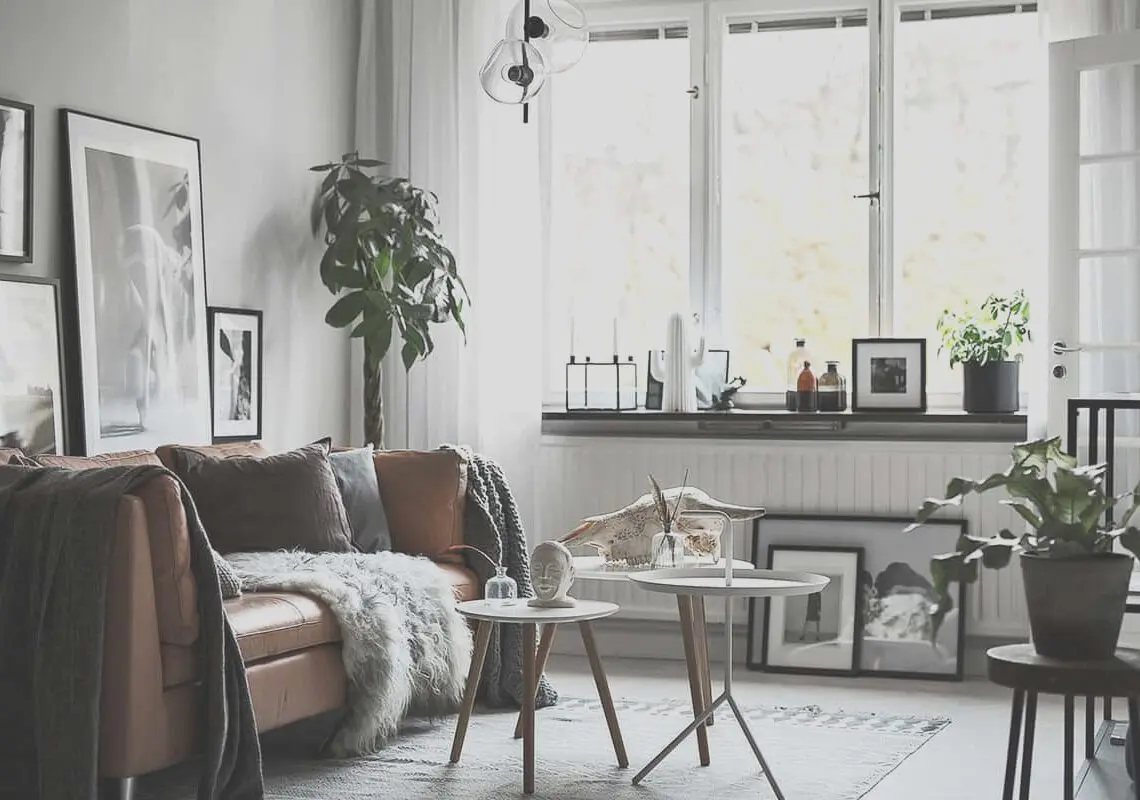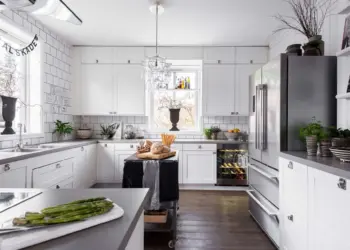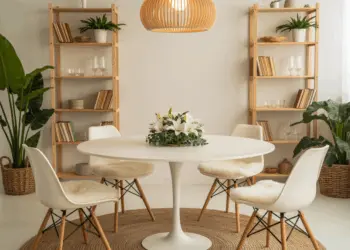Hey there, design enthusiasts! Ever found yourself caught in the mesmerizing blend of Japanese and Scandinavian interior styles? It’s like sushi and Swedish meatballs meeting for a cultural exchange in your living room! However, there’s a fine line between fusion and confusion, and today, we’re diving into the realm of “Japanese Scandinavian Interior: Ways to Blend.” Yep, you read that right – we’re exploring the art of blending these two diverse aesthetics without creating a design disaster.
Are you ready to embark on this creative journey? Let’s roll (not sushi, just yet) into the world where minimalism meets tranquility!
Table of Contents
Unveiling the Essence of Japandi
Japandi, at its core, is a celebration of quality craftsmanship, where carefully selected objects, clean lines, and sparse house plants converge to create an interior that captures the essence of both Scandinavian and Japanese design principles. This design style thrives on the use of natural, tactile materials, bright neutral colors, and an overall sense of simplicity that goes beyond aesthetics and delves into the functionality of living spaces.
The Marriage of Two Design Philosophies
The compatibility of Scandinavian and Japanese design in Japandi can be attributed to their shared roots in functionality and simplicity. While Scandinavian interiors embrace cool colors and the concept of “hygge” (warmth and coziness), Japanese style design leans towards warmer, natural colors and the philosophy of “wabi-sabi” – finding beauty in imperfection. Japandi beautifully navigates these nuanced differences, resulting in a sophisticated and timeless interior style.
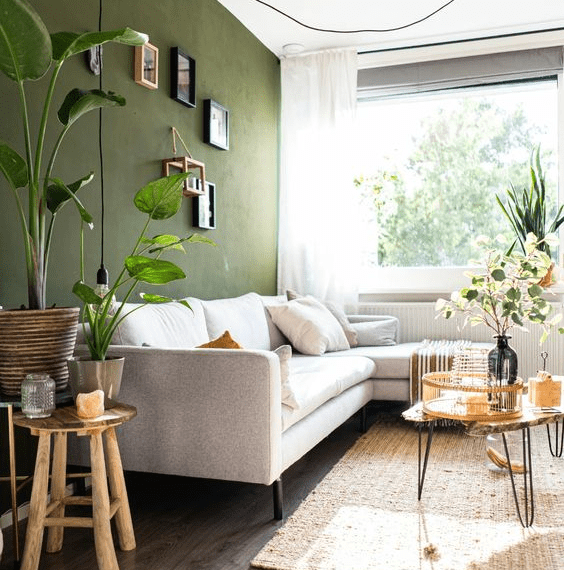
The Fusion Fiasco
So, you’ve decided to marry the simplicity of Japanese design with the coziness of Scandinavian vibes. Excellent choice! But beware – this fusion is like a cocktail; too much of one ingredient, and you’re left with a bitter taste.
1. Overdoing the Minimalism
In the pursuit of achieving that zen-like Japanese simplicity, it’s easy to go overboard. Sure, decluttering is fantastic, but turning your living room into a barren wasteland of furniture won’t scream “cozy” anytime soon! Mix in some warm Scandinavian textures, like fuzzy blankets or knitted cushions, to balance out the austerity.
2. Ignoring Color Harmony
Japanese interiors often embrace earthy tones and natural hues, while Scandinavians are known for their love affair with whites and light woods. But here’s the thing – throwing them together like a mismatched puzzle might leave your space looking like a confused artist’s palette. Find a common ground; maybe opt for a neutral base with pops of muted colors for a harmonious blend.
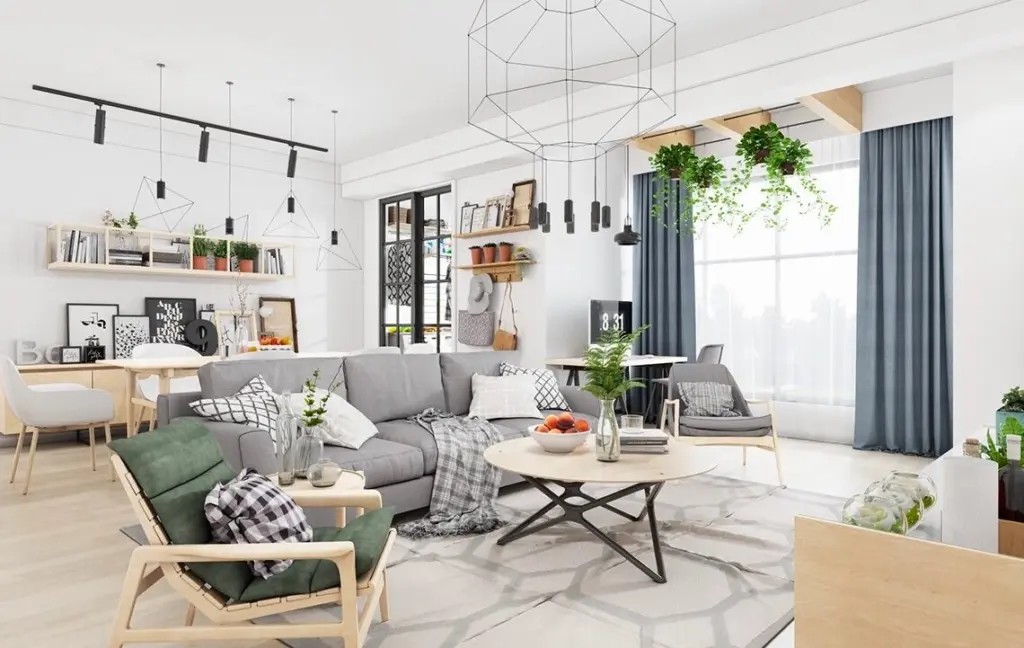
Creating Harmony: The Ultimate Cheat Sheet
Now that we’ve identified the pitfalls, let’s dive into the nitty-gritty of achieving a harmonious Japanese Scandinavian interior. Get your notepad ready, because we’re about to drop some design wisdom!
1. Find the Common Thread
Think of your interior design as a good conversation – there needs to be a common language. Both Japanese and Scandinavian aesthetics have a love for natural materials, be it wood or bamboo. Use this common thread to weave your design narrative. Incorporate wooden furniture, perhaps a sleek Japanese-inspired coffee table paired with Scandinavian wooden chairs.
2. Lighting Magic
Both cultures appreciate the beauty of natural light, but the trick is in how they manipulate it. Japanese interiors often use shoji screens to diffuse sunlight, while Scandinavians adore large windows to let the Nordic glow in. Merge these ideas by using sheer curtains or light-toned blinds to soften the sunlight without obstructing it. Don’t forget to add ambient lighting for those cozy Scandinavian style evenings!
3. Mingle Textures Like a Matchmaker
Think of your space as a texture dating app – introduce materials that complement each other! Soften the clean lines of Japanese minimalism style with the warmth of Scandinavian textures. Picture this: a sleek Japanese-inspired couch adorned with plush Scandinavian-style throws and cushions. Voilà! You’ve just created a textural love affair.
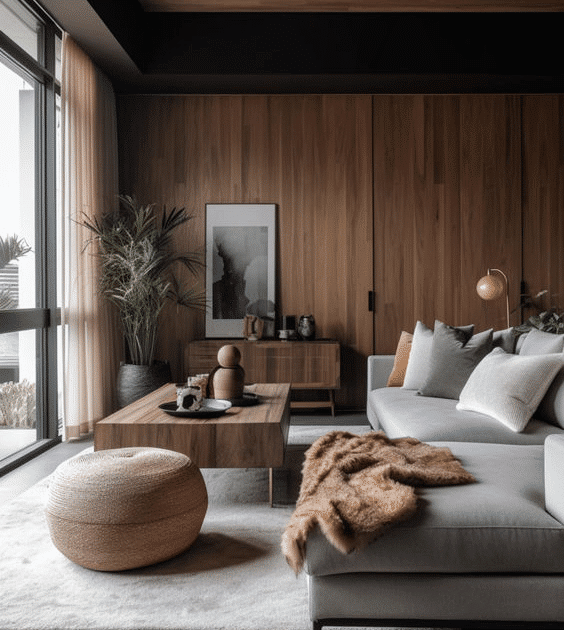
The Danger Zone: What to Avoid Like the Plague
While we’re on this rollercoaster of design do’s and don’ts, let’s put on the brakes and talk about the danger zone – the pitfalls you must avoid at all costs to keep your Japanese Scandinavian interior from going bland.
1. Clashing Patterns
Picture this: Japanese simplicity meets the geometric patterns of Scandinavian design. Sounds disastrous, right? Avoid a pattern clash by sticking to a consistent theme. If you’re feeling bold, opt for subtle, cohesive patterns that nod to both cultures without causing visual chaos.
2. Sacrificing Comfort for Minimalism
Sure, Japanese minimalism style is all about simplicity, but it doesn’t mean sacrificing comfort. Your Scandinavian side won’t forgive you for turning your home into a museum of uncomfortable furniture. Find the sweet spot where functionality meets aesthetics – your backside will thank you.
Decorating in Japandi Style
Japandi is synonymous with clearing away clutter and instilling a sense of order in the home. However, this doesn’t translate to bare walls or a complete removal of personal touches. Instead, it emphasizes creating a well-curated interior with meticulously chosen objects that subtly draw attention. Key elements include:
1. Clean and Clutter-Free Spaces
Japandi encourages a clutter-free environment, focusing on simplicity and cleanliness.
2. Quality Over Quantity
Investing in timeless designs is paramount in Japandi style, prioritizing quality over quantity.
3. Embracing Imperfection
Natural materials, ceramics, and casual throws are celebrated for their imperfections, aligning with the Japanese concept of wabi-sabi.
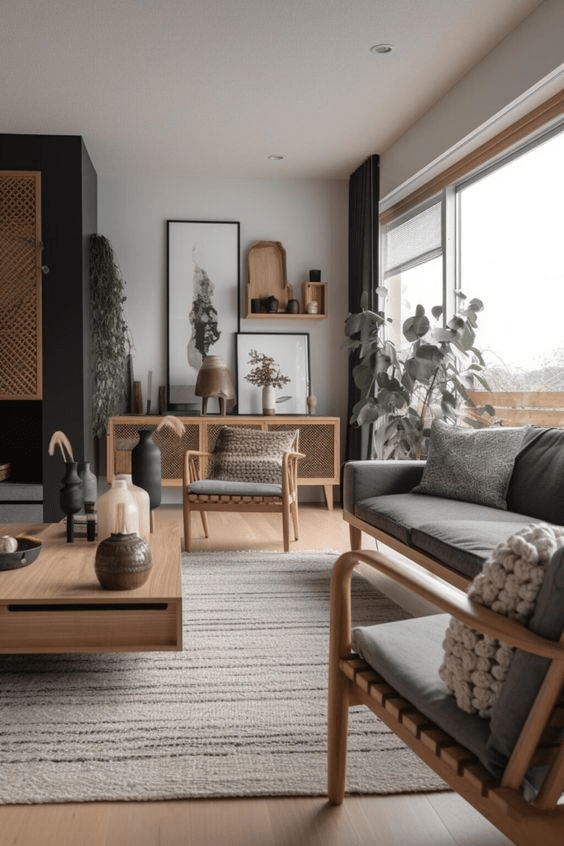
4. Clean Lines and Elegance
Infusing Japanese elegance, Japandi emphasizes clean, simple lines in furniture and interior details, achieving a sophisticated aesthetic.
5. Accenting with Black
Black accents, a neutral color palette, and natural materials contribute to the characteristic Japandi look.
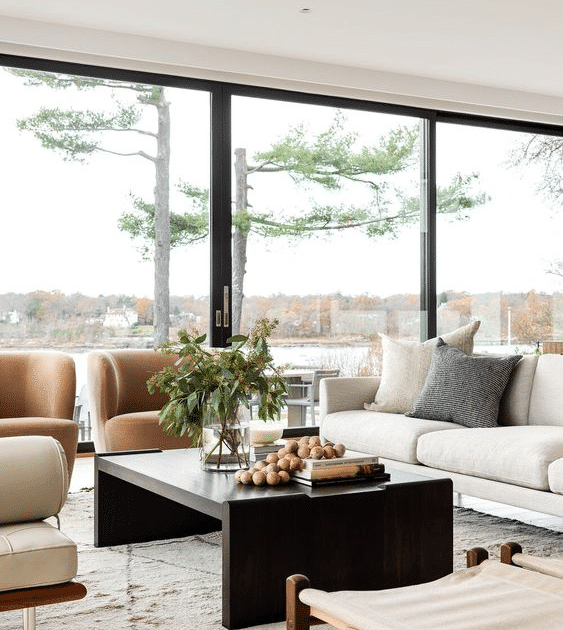
6. Stoneware and Ceramics
Vases and pots made from stoneware or ceramics add a touch of elegance and monotone textiles enhance the overall harmony.
7. Open Floor Plans for Fluidity
Both Japanese and Scandinavian design often favor open floor plans, creating a sense of flow and spaciousness. Knock down unnecessary walls to connect different areas seamlessly. This architectural choice enhances the combined aesthetic and allows for a more cohesive design.
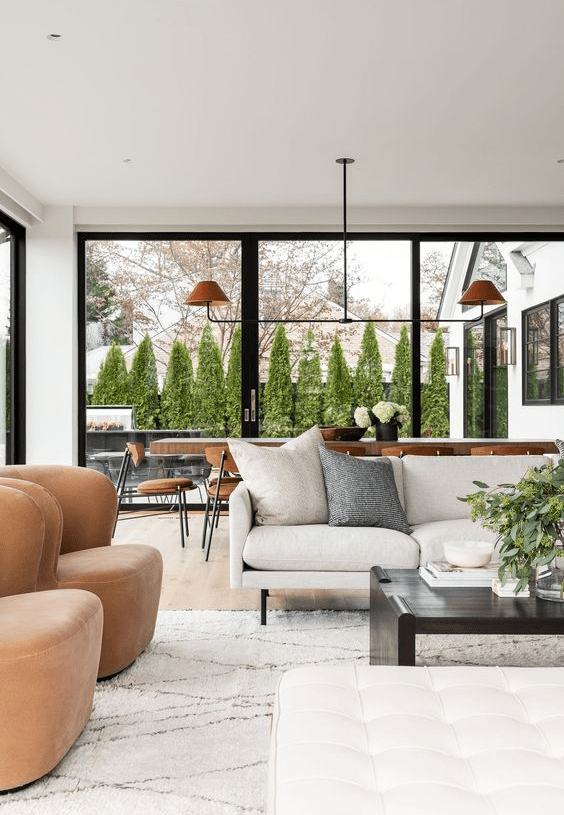
8. Emphasize Outdoor Connections
Scandinavians appreciate their connection to nature, and the Japanese concept of “engawa” embraces a similar idea. Bring the outdoors in by strategically placing plants or creating a cozy reading nook by a window. This connection to nature further amplifies the perfect combine of Japanese and Scandinavian design.
8. Personalize with Cultural Touches
Finally, make the space uniquely yours by adding personal touches that reflect both Japanese and Scandinavian cultures. Whether it’s a handcrafted Nordic rug or a Japanese tea set, these personalized elements will elevate your interior, making it a true reflection of your taste and style.
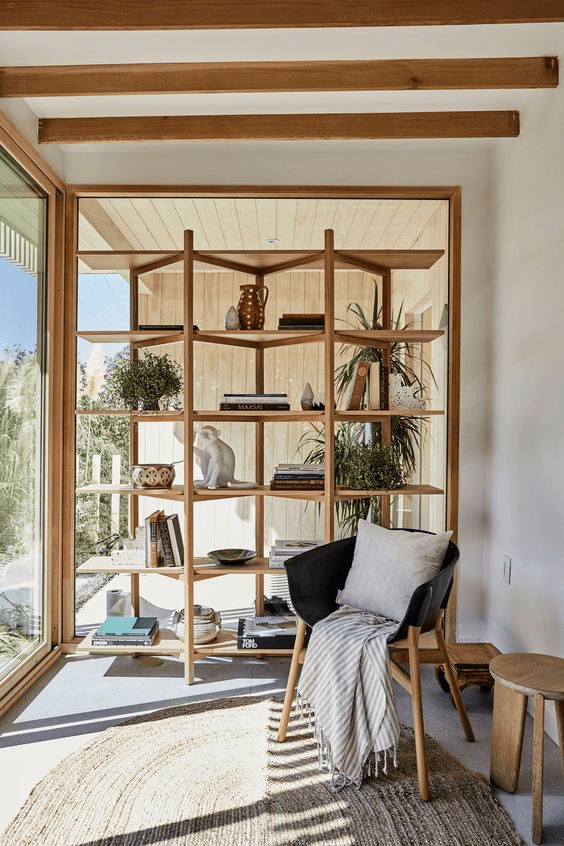
There you have it – the secret sauce to a Japanese Scandinavian interior that’s anything but blend! By finding the common ground between these two design giants, weaving textures like a pro, and avoiding the danger zones, you’re well on your way to creating a space that reflects the best of both worlds.
So, go ahead, embrace the fusion, but remember – balance is the key. Let your space tell a story of cultural exchange, where Japanese tranquility dances with Scandinavian coziness in perfect harmony. Say goodbye to blandness and hello to a home that’s as unique as you are! Cheers to the art of blending!
FAQs
How can I make the fusion feel cohesive rather than disjointed?
Start with a neutral base and gradually introduce elements from both styles. Consider the flow of the room and ensure that each piece contributes to the overall vibe. It’s about creating a seamless transition between Japanese and Scandinavian aesthetics.
What is Japanese style interior design called?
Japanese style interior design is often referred to as “Zen” or “Wabi-Sabi” design. It emphasizes simplicity, natural elements, and a connection with nature. Key features include minimalism, the use of shoji screens, sliding doors, tatami mats, and incorporating natural materials such as wood and stone. The goal is to create a harmonious and tranquil living space.
What is Muji style?
Muji is a Japanese retail company known for its minimalist and functional design across various products, including furniture and home goods. Muji style in interior design is characterized by simplicity, neutrality, and a focus on practicality. It often incorporates natural materials and a subdued color palette. Muji-style interiors aim to create a serene and clutter-free environment, aligning with the principles of minimalist design.
